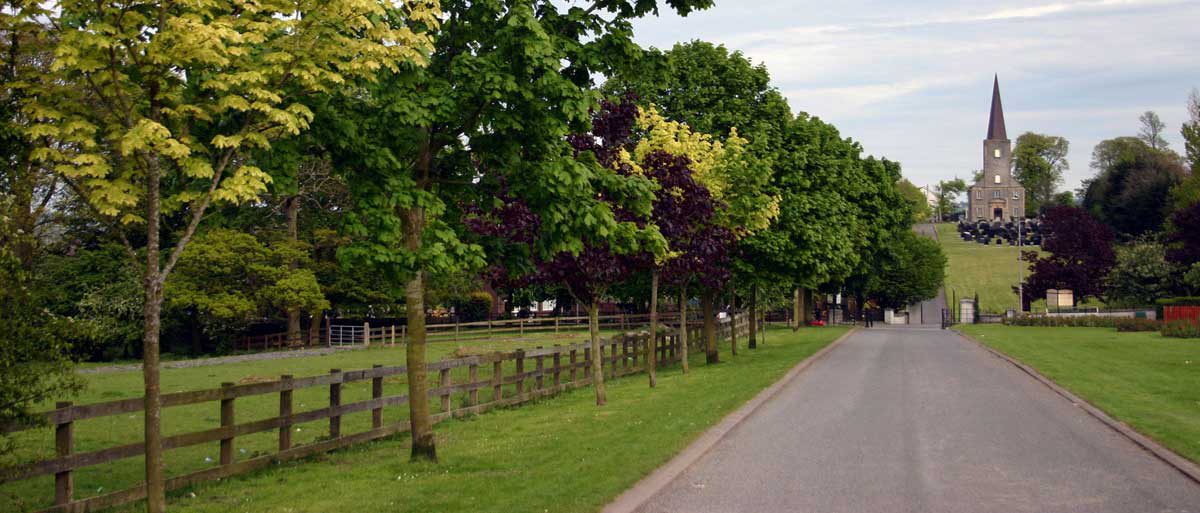In 1651, Major de Burgh built a brick house at Moira. But soon after, George Rawdon became the new owner of the house and estate.
His son Arthur Rawdon, (1662-1695) was born and grew up here. When he inherited the lands at Moira he rebuilt the mansion which became one of the most magnificent Castles in the country. We have very little idea of what it looked like, except for one drawing.
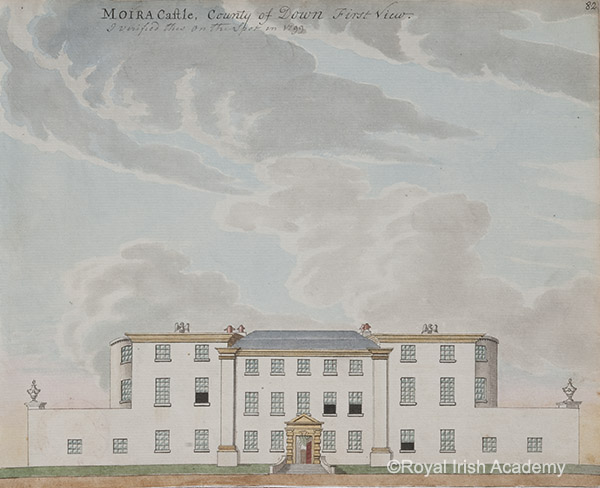
Moira Castle 1799 by Gabriel Beranger
By permission of the Royal Irish Academy ©RIA
This drawing (note the reflection of the couple in water) and an old map of Moira published in 1777 (below), both indicate that the “small lough eastwards” would have been just behind the wall at the corner of Station Road.
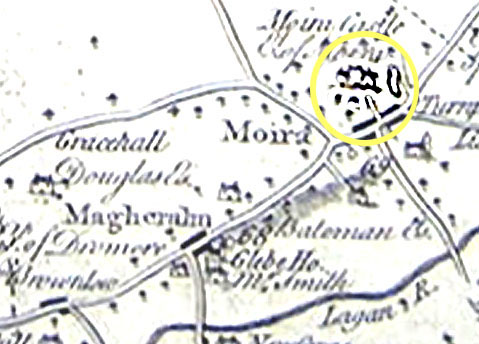
Old map of the village of Moira showing the small lough
Several writers describe the mansion as a “commodious habitation, (that means a home with lots of rooms) surrounded by a wood, which affords beautiful walks, a large lawn extends in front, where sheep feed, and is terminated by trees, and a small Lough eastwards; the rear of the castle grounds contains a wood, with large opening fronting the castle, which forms a fine perspective (a beautiful view).”
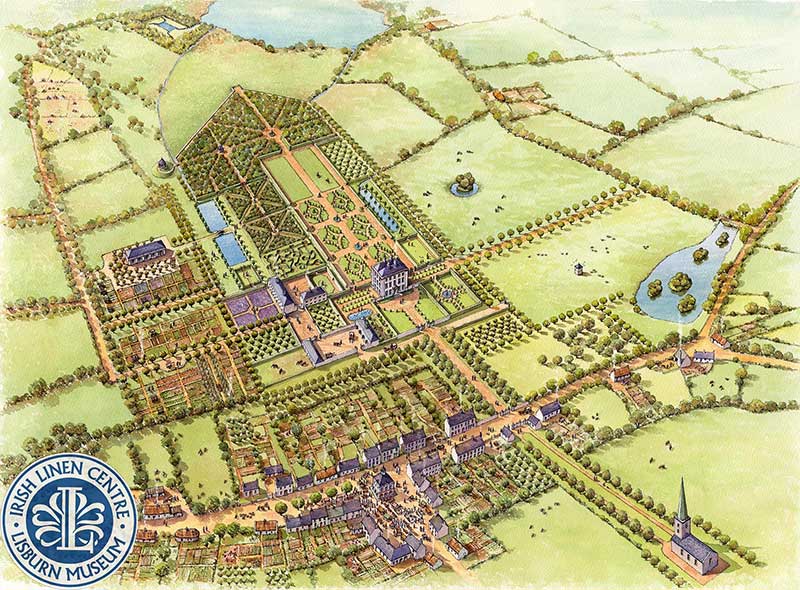
Moira Demesne watercolour painted by Philip Armstrong of Paint the Past http://philarm.com and permission to use granted by the Copyright holder Irish Linen Centre and Lisburn Museum.
Arthur was fascinated by stories of the exotic plants and seeds in Jamaica so he sent a gardener called James Harlow to go to Jamaica in 1692 to bring back plants for Moira.
In his estate he built the first hot-house in Europe. It is believed that frogs were first discovered in Ireland at Moira, probably in the magnificent botanical gardens. (Bassett’s History of Co. Down)
“The trees included the Locust of Virginia, a tree 30ft high, and of a trunk at least a foot and a half in diameter, bearing a pod longer than any pea, and full of honey, supposed to be the food that Saint John the Baptist lived on in the wilderness.” (MOIRA A Historical Handbook by Rev. Canon C.R.J. Rudd former Rector of Moira)
Sadly Sir Arthur lived only a short time to enjoy the garden he created and loved. But what a magnificent castle and demesne he built in less than 11 years!
For many years it was possible to see the “long” and “round” ponds, the Dark Walk (a tree-lined avenue cut down during World War II) and a well preserved ice-house. It is a shame so much has been lost.
The are widely differing dates given for the demolishing of the Castle but it seems most probable that it took place early in the early nineteenth Century.
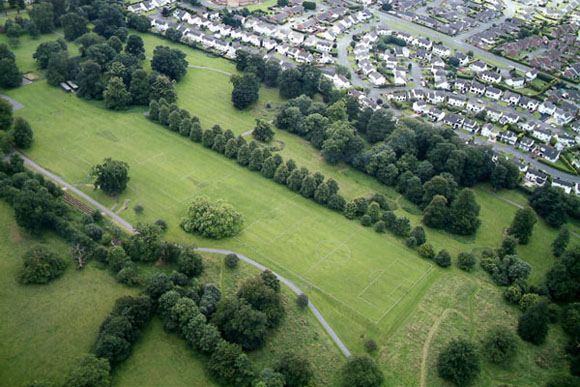
aerial view of Moira Demesne

